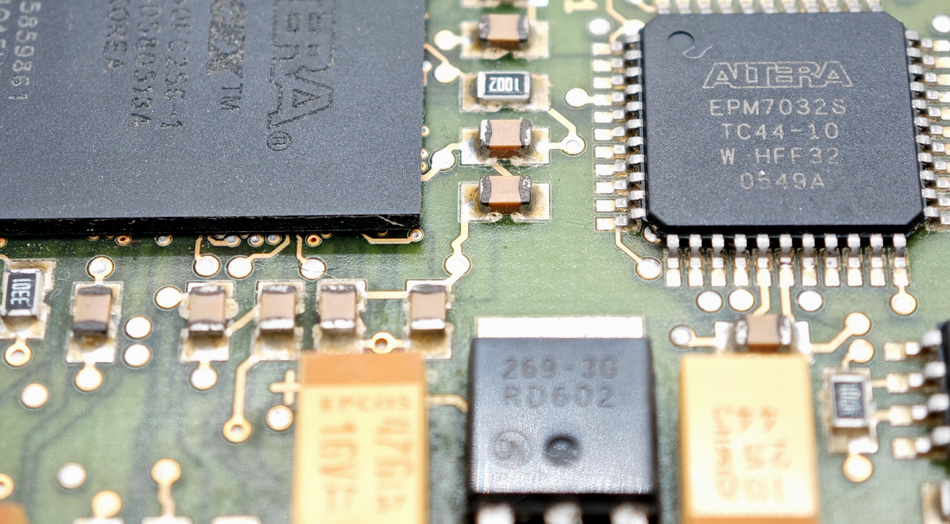- English
- Español
- Português
- русский
- Français
- 日本語
- Deutsch
- tiếng Việt
- Italiano
- Nederlands
- ภาษาไทย
- Polski
- 한국어
- Svenska
- magyar
- Malay
- বাংলা ভাষার
- Dansk
- Suomi
- हिन्दी
- Pilipino
- Türkçe
- Gaeilge
- العربية
- Indonesia
- Norsk
- تمل
- český
- ελληνικά
- український
- Javanese
- فارسی
- தமிழ்
- తెలుగు
- नेपाली
- Burmese
- български
- ລາວ
- Latine
- Қазақша
- Euskal
- Azərbaycan
- Slovenský jazyk
- Македонски
- Lietuvos
- Eesti Keel
- Română
- Slovenski
- मराठी
- Srpski језик
Precision Engineering and High-Precision Manufacturing in PCBA Manufacturing
2024-04-19
In PCBA manufacturing, precision engineering and high-precision manufacturing are crucial, especially in applications that require high performance, high density, and high reliability. Here are key considerations regarding both areas:

1. Precision Engineering:
a. Precision layout design: PCB layout design needs to consider the precise positioning and positioning of components to ensure that components are correctly placed in their designated locations and reduce errors and inconsistencies.
b. Package and component selection: Select appropriate SMT (surface mount technology) packages such as micro and ultra-miniature packages to achieve high-density and high-performance circuit boards.
c. Precision welding: The SMT process requires a highly precise soldering process to ensure that the components are correctly soldered to the PCB and the soldering quality is reliable.
d. Precision measurement and calibration: High-precision measurement tools and equipment are required during the manufacturing process to verify the quality and performance of the circuit board.
e. Precise stacking and stacking: The stacking and stacking of multi-layer PCBs must be precisely controlled to ensure signal integrity and electromagnetic compatibility.
f. Precision machining: If mechanical processing is required, such as holes, cutting and etching, then these operations also require high-precision engineering and equipment.
2. High-Precision Manufacturing:
a. High-precision production equipment: PCBA manufacturing requires the use of high-precision equipment, such as automatic placement machines, reflow ovens, printing presses, and testing equipment to ensure accurate placement and welding of components.
b. Vision inspection system: The vision inspection system is used to detect and calibrate the position of components to ensure that they are in the correct position.
c. Automated process control: Automated control systems can monitor the manufacturing process, correct errors in a timely manner and maintain consistent manufacturing quality.
d. Material control: High-precision manufacturing requires precise control of material properties, including the quality and size of PCB materials, packaging and solder.
e. Process optimization: Optimization and improvement of manufacturing processes can increase production efficiency and reduce defective product rates.
3. High-Precision Testing and Verification:
a. Functional testing: High-precision testing equipment is used to verify the functionality and performance of PCBAs to ensure they meet specifications.
b. Electrical testing: Electrical testing systems can detect electrical connectivity and performance on circuit boards.
c. Optical and X-ray inspection: Optical and X-ray inspection systems are used to inspect small packaging and soldering issues, such as solder ball connections and BGA packages.
d. High-resolution inspection: High-resolution equipment is used to detect tiny defects and problems.
e. Environmental testing: In high-precision manufacturing, environmental testing such as temperature cycling and humidity testing are also very important to verify the stability of PCBA under various conditions.
High-precision manufacturing requires precision engineering, high-precision equipment, strict quality control and testing verification processes. These measures help ensure that the performance of manufactured electronic products is reliable, stable, and meets customer and market requirements.
-
Delivery Service






-
Payment Options









